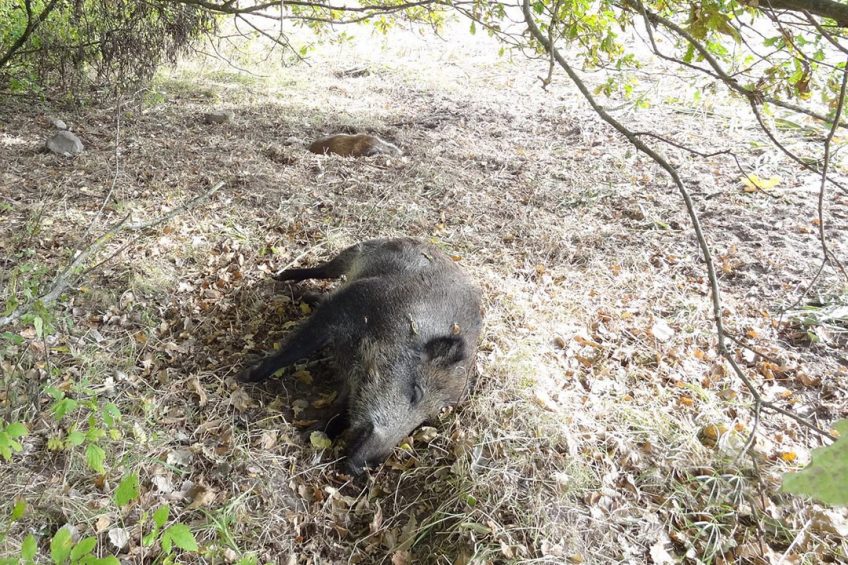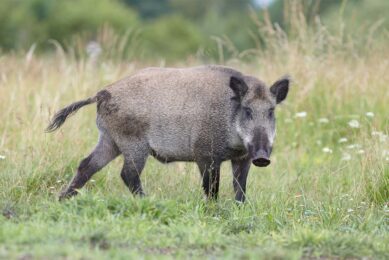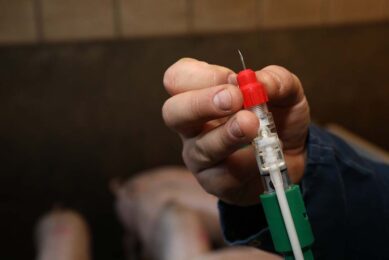ASF Poland: First outbreak on farm in Western Poland

For the first time, African Swine Fever has also hopped onto a large domestic pig farm in Western Poland, affecting over 23,700 pigs. It is the largest affected pig farm since Poland has started reporting ASF outbreaks in 2014.
The outbreak was discovered on March 18 and the confirmation was given on Saturday, March 21, according to the German agricultural title Top Agrar. The report has already been filed in the European Animal Disease Notification System (ADNS) and has also been confirmed by the Polish Central Veterinary Inspectorate.
6,900 sows on the farm
The breeding farm is located near the village of Niedoradz, Lubusz province, at 66km as the crow flies from the border with Germany. The farm had 23,746 animals on-site, of which 6,904 sows, 16,037 pre-weaning piglets, 776 weaner pigs and 29 boars. Roughly 135 pigs had died of the virus, according to Top Agrar. Obviously, the authorities moved to cull the entire farm’s pig population and protection zones have been created around the farm.
It is not a surprise that the first affected pig farm is around Niedoradz. In recent weeks, more than once, dead wild boar had been found in the vicinity of the village’s pig farm houses.
ASF in 5 provinces in Eastern Poland
The virus has been circulating in 5 provinces in Eastern Poland since 2014. In those areas new outbreaks continue to be found as well. So far, in Eastern Poland, 237 (backyard) farms were known to have been infected. The largest affected farm in Eastern Poland had 9,400 animals on-site.
In Western Poland – an entirely different area of Poland, as can be seen on the map, the virus has been in the wild boar population since November 2019. Ever since the virus was confirmed in wild boar carcasses on 502 locations. The outbreak zone stretches out into 3 provinces, being Lubusz (413 outbreak locations), Greater Poland (84) and Lower Silesia (5). The carcass found closest to Germany was found mid-January 2020, at a distance of 13km from the German border.
In total, in March ASF-infected carcasses have now been found on 143 locations in Western Poland, exactly as many as in the whole month of February.
It is difficult to gauge at this time how many wild boar have died because of ASF in Western Poland, because one finding place can relate to 1 affected carcass as well as 10 simultaneously. This type of information will only be shared later by the authorities.
ASF Belgium: 1 ‘old’ new carcass found
Belgium also reported the finding of an ASF infected carcass, in Tintigny. Just like with the 5 previous carcasses, this finding also only constituted of dry and emaciated bones. The Belgian authorities estimated that the animal had been dead for more than 6 months. It is victim 833 in total – in the southern Belgian province of Luxembourg the virus has only been found in wild boar.
The carcass being old means that the last ‘fresh’ carcass of an ASF-infected wild boar in Belgium was found in August 2019. The country is hoping and aiming to get back the status of ‘free from ASF’ as soon as possible. Part of that process is making sure that the area is free from wild boar and that all carcasses – if any are left are removed.
Normally a country can be eligible to get back its status of ‘free from ASF’, when it can demonstrate that it has been free from ASF for a certain period. It is not clear as yet, whether or not the finding date is key for the World Organization for Animal Health (OIE) and European authorities, or the most probable date of death.

Track the movement of African Swine Fever: For everything you need to know about ASF, from the latest outbreaks to controls stay up to-date…
 Beheer
Beheer








 WP Admin
WP Admin  Bewerk bericht
Bewerk bericht